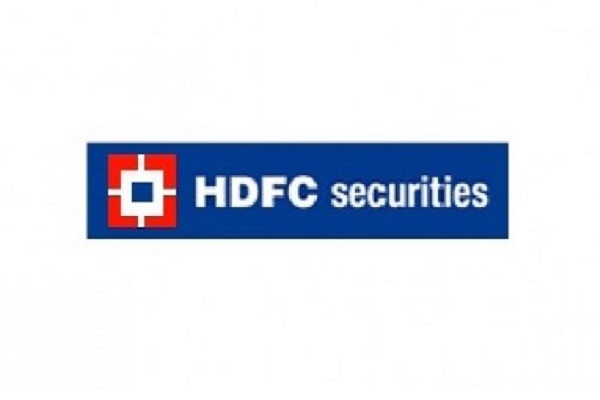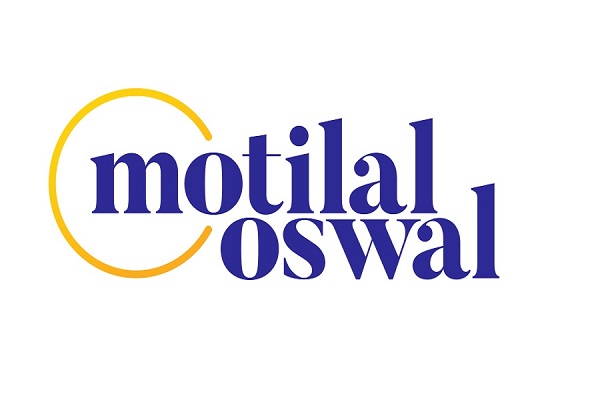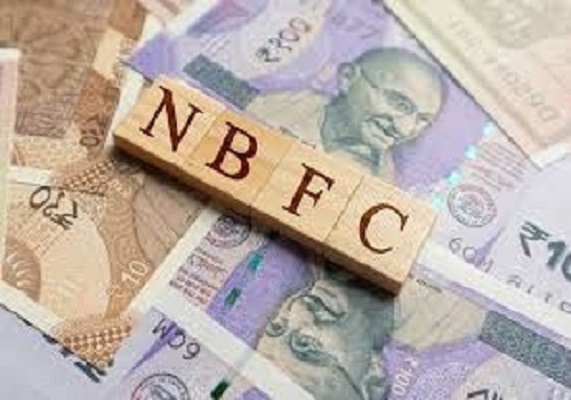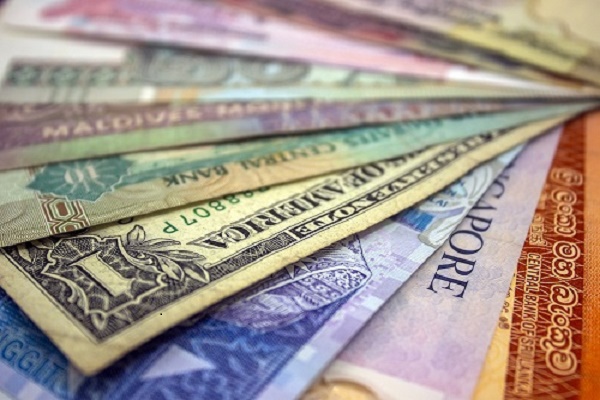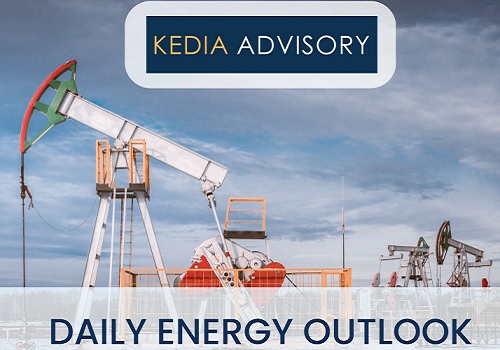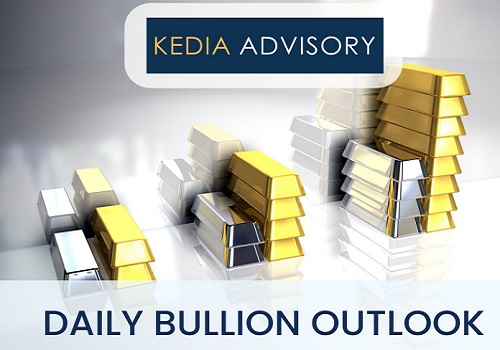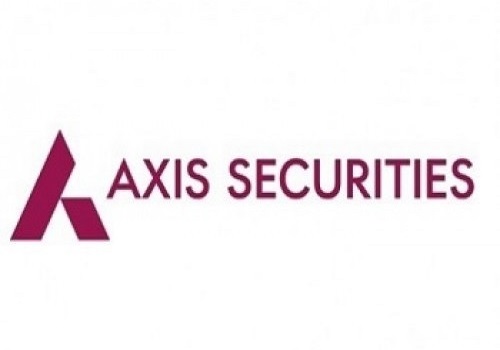Copper trading range for the day is 874.3-881.9 - Kedia Advisory

Gold
Gold prices declined by 0.21% to settle at 99,329 as investors liquidated positions to cover losses in other asset classes amid rising geopolitical tensions in the Middle East. The ongoing Israel-Iran conflict entered its seventh day, with Israel reportedly targeting over 20 strategic sites in and around Tehran, including nuclear and missile facilities. The potential for U.S. involvement in these strikes has raised fears of a wider regional war, which typically supports safe-haven assets like gold. However, profit-taking and broader market sell-offs weighed on bullion prices. Adding to the cautious sentiment, the U.S. Federal Reserve kept interest rates unchanged but indicated the possibility of two rate cuts later this year. This dovish tilt came despite persistent inflation and slowing economic growth, and followed public criticism from President Trump urging more aggressive easing. According to a recent World Gold Council survey, 95% of central banks expect global gold reserves to increase in the coming year, with 43% planning to raise their own holdings. Goldman Sachs and Bank of America maintained bullish long-term forecasts, projecting gold to touch $4,000/oz by mid-2026. However, physical demand in Asia weakened due to record-high prices, with Indian dealers offering discounts of up to $63/oz to entice buyers. Technically, the market is undergoing long liquidation, with open interest dropping 2.33% to 14,601. Immediate support is seen at 98,815, with further downside toward 98,300. Resistance is at 99,705, and a breakout could push prices to 100,080.
Trading Ideas:
* Gold trading range for the day is 98300-100080.
* Gold falls as investors sell to cover losses amid rising Middle East conflict tensions.
* Fed holds rates, signals two cuts in 2025 despite persistent inflation and weak growth.
* Trump criticizes Fed Chair Powell, urges more aggressive rate cuts to support economy.
Silver
Silver prices declined by 1.08% to settle at 107,393 as investors booked profits following a recent rally, despite escalating geopolitical tensions in the Middle East. Market anxiety grew amid reports that U.S. officials are preparing for a potential military strike on Iran, amplifying safe-haven demand. However, this was offset by broader market corrections and the Federal Reserve’s cautious stance, which left interest rates unchanged while warning that new tariffs proposed by President Trump could further fuel inflation and economic uncertainty. Earlier this week, silver touched its highest levels since 2012, buoyed by a strong mix of safe-haven inflows, robust industrial demand, and persistent supply-side constraints. Silver’s growing use in solar panels, electronics, and clean energy technologies now constitutes more than half of global demand, underlining the metal’s structural long-term significance. Despite expectations for a 21% narrowing of the supply deficit in 2025, the market remains tight. Industrial fabrication is forecast to increase by 3%, surpassing 700 million ounces for the first time. Meanwhile, physical investment is set to grow 3% on improving demand in Europe and North America. Technically, the market is under long liquidation, with open interest falling 9.87% to 14,366 as traders locked in recent gains. Silver has immediate support at 106,725, with a break below opening the door to 106,050. Resistance is seen at 108,260, and a move above that could lift prices toward 109,120.
Trading Ideas:
* Silver trading range for the day is 106050-109120.
* Silver dips as geopolitical tensions rise following reports of potential U.S. strike on Iran.
* Market volatility grows amid fears of wider Middle East conflict impacting investor sentiment.
* Fed holds rates steady, warns Trump’s tariffs may fuel inflation and economic uncertainty.
Crude oil
Crude oil prices rose by 1.82% to settle at 6,449 amid escalating geopolitical tensions in the Middle East, heightening concerns over potential supply disruptions. The ongoing missile exchanges between Israel and Iran, with Israel claiming strikes on nuclear-related targets in Tehran, have intensified fears of a wider regional conflict. The possibility of U.S. involvement, as indicated by President Trump’s hawkish rhetoric, further threatens the security of vital shipping lanes such as the Strait of Hormuz, through which a significant portion of global oil supply flows. Supporting prices further, U.S. crude inventories fell sharply by 11.473 million barrels last week—the largest draw in a year—far exceeding expectations of a 2.3 million barrel decline. Stocks at Cushing, Oklahoma, also dropped by 995,000 barrels, pointing to tighter near-term supply. However, refined product inventories saw modest builds, with gasoline and distillate stocks rising by 209,000 and 514,000 barrels, respectively. On the demand side, the International Energy Agency (IEA) expects global oil consumption to continue growing until 2029, peaking at 105.6 million barrels per day, driven by resilient U.S. gasoline demand and slower EV adoption. In contrast, top importer China is projected to see demand peak by 2027. Technically, the market is under fresh buying, with open interest up by 0.64% to 8,872. Crude oil has support at 6,337, and a break below may test 6,226. Resistance is seen at 6,572, with a breakout potentially taking prices to 6,696.
Trading Ideas:
* Crudeoil trading range for the day is 6226-6696.
* Crude oil rallies as Israel-Iran conflict escalates, stoking fears of supply disruptions.
* Strait of Hormuz at risk, heightening concerns over tanker route disruptions.
* Russia’s Novak: Oil market balanced; no current supply shortage despite conflict.
Natural gas
Natural gas prices climbed 2.35% to settle at 352.7, driven by hotter-than-normal weather forecasts and a rebound in LNG exports. Temperatures across the Lower 48 states are expected to remain elevated through early July, increasing the demand for natural gas-powered air conditioning. This weather-driven surge in consumption is aligning with rising flows to LNG export terminals as key plants like Cameron, Sabine Pass, and Corpus Christi resume operations after maintenance. LNG feedgas demand, which had averaged 14.1 bcfd so far in June—down from 15.0 bcfd in May and April’s record 16.0 bcfd—is poised to rise in the coming weeks. On the supply side, U.S. natural gas output ticked higher in June, with daily production touching an eight-week high of 106.4 bcfd, lifting the monthly average to 105.3 bcfd. Meanwhile, U.S. utilities injected 95 billion cubic feet of gas into storage in the week ending June 13, in line with expectations. The U.S. Energy Information Administration (EIA) forecasts record-high natural gas production and consumption in 2025, with dry gas output expected to reach 105.9 bcfd and LNG exports projected to climb to 14.6 bcfd—up from a record 11.9 bcfd in 2024. Technically, the market is witnessing short covering as open interest declined by 6.11% to 15,749. Immediate support lies at 345.3, and a break below could lead to 337.9. Resistance is seen at 358.1, with potential for a rally toward 363.5 if momentum continues.
Trading Ideas:
* Naturalgas trading range for the day is 337.9-363.5.
* Natural gas rises on forecasts for hotter-than-normal July weather across the U.S.
* Heatwave expected to lift gas demand for air conditioning in the Lower 48 states.
* LNG exports rebound as maintenance ends at key terminals like Cameron and Sabine Pass.
Copper
Copper prices edged lower by 0.18% to settle at 878.3 as market sentiment remained cautious amid geopolitical uncertainty and mixed supply-demand signals. Investors closely monitored the escalating Israel-Iran conflict, which has weighed on broader risk appetite. However, tight global supply continues to offer underlying support. Stocks in LME-registered warehouses fell to 107,350 tons—down 60% since March and at their lowest levels since May 2024. Available inventories have dropped a staggering 80% in 2024, partly due to increased U.S. imports ahead of anticipated tariffs, highlighting robust short-term demand despite broader macro concerns. On the monetary front, the U.S. Federal Reserve kept interest rates steady but maintained a cautious tone, warning that President Trump's proposed tariffs could reignite inflation, potentially complicating future policy decisions. While this adds uncertainty to global growth projections, it also supports commodities like copper due to supply constraints. From a production standpoint, Peru—the world’s second-largest copper producer—recorded a 7.91% YoY output increase in April, driven by gains at Southern Copper and Las Bambas. Annual production is expected to touch 2.8 million tons in 2024. Meanwhile, the global refined copper market posted a 17,000-ton surplus in March, down significantly from 180,000 tons in February, reflecting improved balance in supply and demand. Technically, copper is under long liquidation, with open interest falling 15.69% to 2,763. Immediate support is at 876.3, with deeper downside potential at 874.3. Resistance is seen at 880.1; a move above this could push prices to 881.9.
Trading Ideas:
* Copper trading range for the day is 874.3-881.9.
* Copper settled down as the market focused on developments in the Israel-Iran conflict.
* Copper output in Peru, rose 7.91% year-on-year in April to 220,261 metric tons.
* Available inventories have plunged 80% this year, partly driven by a surge in US imports ahead of anticipated tariffs.
Zinc
Zinc prices edged higher by 0.26% to settle at 253.65, supported by a narrowing global surplus and optimism surrounding China's consumer demand. According to the International Lead and Zinc Study Group, the global zinc market surplus declined to 16,000 metric tons in April, down from 23,400 tons in March. For the January–April 2025 period, the cumulative surplus stood at 151,000 tons—still ample, but down from 176,000 tons during the same period last year, indicating a gradual tightening of market balance. Supporting the price rebound was a better-than-expected increase in China's retail sales, which bolstered hopes of improved demand from the world’s largest metals consumer. China’s factory output growth hit a six-month low in May, and export growth also missed expectations, dampening broader sentiment. Production-side constraints are also influencing the market. Refined zinc output in China declined 1% month-on-month in May, though it was up 2% year-on-year. However, cumulative production for January to May rose only marginally by 0.5%, falling short of expectations due to extensive maintenance shutdowns across key smelting regions. Globally, output pressure is also mounting, with a 20% annual decline at Teck Resources’ Red Dog Mine and a 25% output cut announced by Australia’s Nyrstar smelter. Technically, the zinc market is under short covering, as open interest dropped 14.96% to 1,575 while prices gained 0.65. Immediate support lies at 251.5, and a break below this could take prices to 249.3. Resistance is seen at 254.9, with a breakout potentially testing 256.1.
Trading Ideas:
* Zinc trading range for the day is 249.3-256.1.
* Zinc gains as the global zinc market surplus fell to 16,000 metric tons in April from 23,400 tons in March.
* Teck’s Red Dog Mine output drops 20% in Q1 as depletion nears.
* Nyrstar to slash zinc output by 25% in 2025 due to low ore treatment profitability.
Aluminium
Aluminium prices edged down by 0.10% to settle at 245.2 as global growth concerns and geopolitical tensions between Israel and Iran weighed on investor sentiment. Fears of broader regional conflict, combined with signs of cooling demand in some key markets, prompted cautious trading. Adding to the pressure, physical premiums for aluminium in the U.S. dropped by over 7% as market participants speculated that potential cuts in U.S. import tariffs on Canadian aluminium could ease supply constraints, lowering spot market pricing power. Retail sales in May beat expectations, indicating that recent economic uncertainty had a limited impact on consumer spending. This helped curb excessive bearish sentiment on China, the world’s largest aluminium producer and consumer. On the supply side, aluminium production in China rose 5% year-on-year in May to 3.83 million metric tons, and output for the first five months of 2025 grew by 4% to 18.59 million tons, reflecting stable operational capacity. However, exports of unwrought aluminium and related products in May were 547,000 tonnes—up 5.6% month-on-month but down 3.2% year-on-year—signalling mixed demand dynamics abroad. Meanwhile, supply risk looms due to uncertainty in Guinea, a key bauxite supplier, where disputes between the government and Emirates Global Aluminium threaten future mining licenses and could impact raw material availability globally. Technically, aluminium is under long liquidation, with open interest falling sharply by 18.67% to 2,401. Support is seen at 243.9, and a drop below may lead to 242.7. Resistance is at 245.9, with a breakout potentially targeting 246.7.
Trading Ideas:
* Aluminium trading range for the day is 242.7-246.7.
* Aluminium falls amid global growth concerns and escalating Israel-Iran geopolitical tensions.
* US physical premiums drop 7% on speculation of possible tariff cuts on Canadian imports.
* China’s stronger retail sales ease fears, limiting bearish sentiment on demand outlook.
Turmeric
Turmeric prices declined by 0.94% to settle at 14,168, pressured by weak domestic and export demand despite signs of supportive fundamentals. The decline came as market arrivals rose to 13,660 quintals, up from 11,940 in the previous session, pointing to marginally higher supply. However, downside was limited amid concerns over production prospects and steady buying interest for fresh quality produce. For the 2024–25 season, turmeric acreage has increased by 10% to 3.30 lakh hectares, driven by comparatively lower profitability in alternative crops. Yet, this increase in area may not translate into higher production as untimely rains are expected to weigh on yields, particularly in regions like Nanded, where crop rot and undersized rhizomes have been reported. Despite the wider acreage, yields are estimated to be 10–15% lower, keeping production concerns intact. At key markets like Duggirala, the newer crop is fetching a premium over old stock due to its superior quality. Market activity remains firm, with steady arrivals of 1,000–1,200 bags daily, and nearly 50–55% of the new crop has already been traded. Additionally, government procurement in Himachal Pradesh is supporting the market sentiment. On the export front, turmeric shipments rose 8.83% during April–March 2025 compared to the previous year. Technically, the market is under fresh selling, with open interest up 1.39% to 17,195. Support lies at 14,090, and a break below could test 14,010. Resistance is at 14,300, above which prices may target 14,430.
Trading Ideas:
* Turmeric trading range for the day is 14010-14430.
* Turmeric prices fell due to weak domestic and export demand.
* Arrivals rose to 13,660 quintals vs. 11,940 in the previous session, indicating increased availability
* Turmeric exports during Apr - Mar 2025, jump by 8.83 percent at 176325.34 tonnes compared to Apr - Mar 2024.
* In Nizamabad, a major spot market, the price ended at 14357.45 Rupees dropped by -0.43 percent.
Jeera
Jeera prices fell by 0.29% to settle at 19,240, extending losses as weak domestic and export demand continues to weigh on market sentiment following the end of the retail season. The price decline is largely attributed to subdued buying interest from both domestic traders and overseas buyers, despite a significant year-on-year rise in export volumes. Comfortable supply conditions and existing stock availability have further intensified the downside pressure, with traders reporting minimal fresh export orders. Despite favorable export data—jeera exports jumped 39.63% during April–March 2025 to 212,502 tonnes from 152,189 tonnes the previous year—the demand in recent months has been inconsistent. In March 2025, exports rose 33.4% over February but saw a sharp 46% drop compared to March 2024, signaling volatility in overseas demand. On the import front, India’s jeera imports for the year fell drastically by over 93%, underscoring the ample availability of domestic stock. Fundamentally, an estimated 20 lakh bags of jeera remain with farmers, of which only 3–4 lakh are expected to be traded by season-end. This could lead to a high carry-forward stock of about 16 lakh bags, putting additional pressure on prices. While geopolitical tensions in countries like Syria, Turkey, and Afghanistan have limited their jeera supply, India's export competitiveness remains underutilized due to weak foreign demand. Technically, jeera is under long liquidation with open interest falling marginally by 0.18% to 6,684. Immediate support is at 19,150; breaking this could lead to 19,060. Resistance is seen at 19,340, and a breakout above may push prices toward 19,440.
Trading Ideas:
* Jeera trading range for the day is 19060-19440.
* Jeera prices dropped due to weak domestic and export demand.
* Ample existing stock and comfortable supply are dampening price prospects.
* Global supply disruptions haven't translated into higher Indian exports due to tepid demand.
* In Unjha, a major spot market, the price ended at 19772 Rupees dropped by -0.94 percent.
Views express by all participants are for information & academic purpose only. Kindly read disclaimer before referring below views
